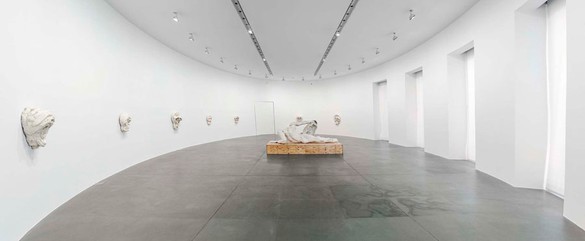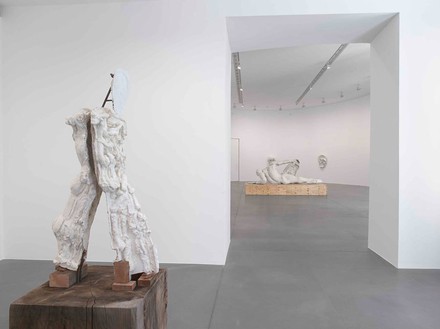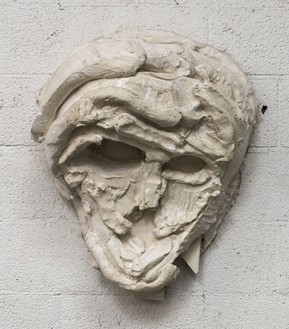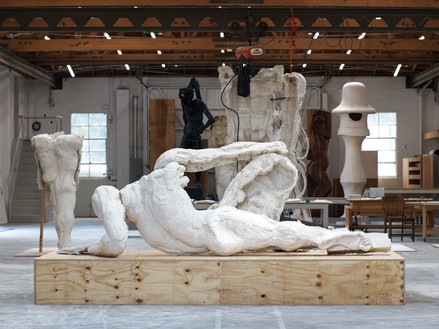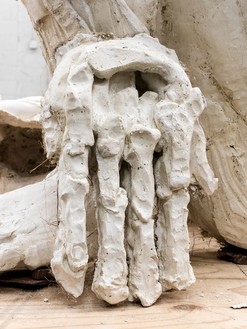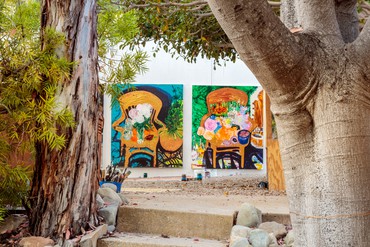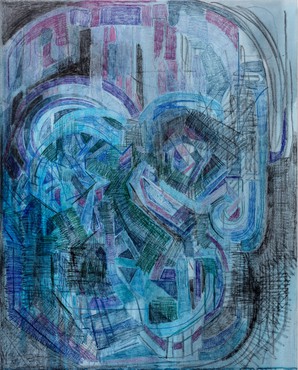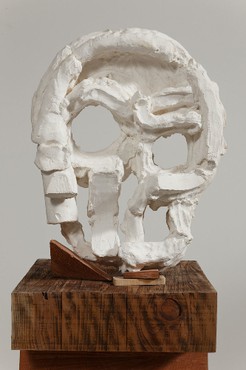About
I am fascinated by the act—whatever form it takes—of making art. And in a broad sense, by how an artist responds to the world and the action that occurs from that interaction…I wanted to get rid of the readymade and figure out what I looked like and how I reacted to the world.
—Thomas Houseago
Gagosian Gallery is pleased to present "Roman Figures," an exhibition of new sculpture by Thomas Houseago.
Engaging in a continuous dialogue with the past, Houseago retraces the history of figurative sculpture through the conditions of his own time. Drawing upon mythology, African tribal art, cartoon imagery, Italian Mannerism, science fiction, and robots, he wrests new vitality from the classical figure. Houseago’s giants have iron rebar skeletons and are made from plaster, hemp, and wood. Rough from jigsaw cuts and incorporating drawn parts, these visceral figures are distinctly postmodern in that they retrofit ancient and modern art history to the terms of popular culture and the traumatic realities of everyday life.
“Roman Figures” presents the large-scale sculpture Reclining Figure (For Rome) together with seven sculpted masks and Untitled (Walking Boy on Plinth) (all works 2013). The Roman Masks build upon the Western modernist fascination with spiritually charged tribal objects from Africa and the South Pacific. Crafted from clay, cast into plaster and hemp, and reinforced with iron armatures, the linear yet highly expressive skull-like reliefs, in which sculptural mass is imbued with the momentous quality of painting, provide startling new interpretations of the transhistorical, transcultural genre of vanitas or mortuary art.
Sono affascinato dall’atto—qualunque forma abbia—del produrre arte. E, in un senso più ampio, da come un artista interagisca con il mondo e dall’azione che scaturisce da questa interazione...Volevo liberarmi del readymade e capire come io mi mostrassi e reagissi al mondo.
—Thomas Houseago
Gagosian Gallery è lieta di presentare “Roman Figures,” una mostra di nuove sculture di Thomas Houseago.
Il tratto peculiare del lavoro di Thomas Houseago è il dialogo continuo che le sue opere intraprendono con il passato—dal quale partono per ripercorrere il lungo percorso storico-artistico della scultura—e con il presente—che interpretano in maniera creativa tramite contaminazioni e influssi diversi tra loro (mitologia, Arte Africana tribale, cartoni animati, Manierismo Italiano, fantascienza e robots). Houseago crea, con materiali semplici quali il gesso, la canapa, il ferro e il legno, delle figure complesse, le quali, sorrette da scheletri di tondini di ferro, coniugano una spiccata materialità e tridimensionalità—arti grezzi e mastodontici, tagliati con il seghetto—con la leggerezza del segno e della pittura a mano libera. Chiaramente postmoderne nel modo in cui rivisitano la storia dell’arte in termini della cultura popolare, le figure viscerali di Houseago incarnano l’estetica e le reazioni del corpo alle realtà traumatiche della vita contemporanea.
La mostra “Roman Figures” presenta la scultura monumentale, Reclining Figure (For Rome) insieme a sette maschere scolpite e alla scultura Untitled (Walking Boy on Plinth) (tutte del 2013). Le Roman Masks coniugano il fascino modernista occidentale con la carica spirituale di oggetti tribali dell’Africa e del Sud Pacifico. Realizzate in gesso e canapa da un calco di argilla e rinforzate con armature in ferro, le maschere lineari, simili a teschi ma comunque altamente espressive, e nelle quali la massa scolpita è impregnata della notevole qualità della pittura, provocano nuove e sorprendenti interpretazioni del genere trans-storico e transculturale della Vanitas o della Mortuary Art.
Reclining Figure (For Rome) è realizzata, da un calco di argilla, in gesso e canapa e sostenuta da una struttura di tondini di ferro parzialmente a vista. Il corpo acefalo e prono poggia su un basamento di compensato, con una superficie rozzamente spalmata a mano. L’opera è una reminiscenza di reliquie dei tempi antichi, frammentate ma comunque venerate, dove la maestà della forma scultorea è stata sottoposta alle vicissitudini dello scorrere del tempo.
Thomas Houseago nato nel 1972 a Leeds, Inghilterra, ha frequentato il Saint Martins College of Art, Londra e il De Ateliers, Amsterdam. Tra le sue recenti esibizioni si annoverano: “The Artist’s Museum,” MOCA, Los Angeles (2010); “What Went Down,” Modern Art Oxford (2010)—mostra itinerante Ashmolean Museum, Museum Abteiberg, Mönchengladbach, e Centre International d’Art et du Paysage de l’Ile de Vassivière (2011)—“The Beat of the Show,” Inverlieth House, Edimburgo (2011); “The World Belongs to You,” Palazzo Grassi, Venezia (2011); “Where the Wild Things Are” e “Thomas Houseago: Hermaphrodite,” Sainsbury Centre for the Visual Arts, Norwich (2012). Il suo lavoro è stato incluso nella Biennale del Whitney Museum del 2010. A gennaio 2013, the Dijon Art Center Le Consortium ha installato una selezione di sculture di Thomas Houseago per le strade di Aix-en-Provence, Francia. La più importante mostra personale dell’artista, “As I Went Out One Morning,” ha aperto a maggio e sarà visitabile fino all'11 novembre 2013 allo Storm King Art Center a Mountainville, New York. Il 26 maggio 2013 inaugura alla Galleria Borghese a Roma la mostra "Thomas Houseago: Striding Figure/Standing Figure" aperta fino al 7 luglio 2013.
Houseago vive e lavora a Los Angeles.
Share
Artist
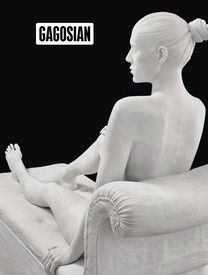
Now available
Gagosian Quarterly Fall 2021
The Fall 2021 issue of Gagosian Quarterly is now available, featuring Damien Hirst’s Reclining Woman (2011) on its cover.
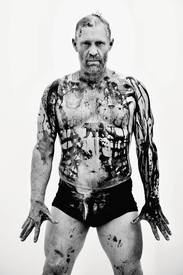
Thomas Houseago: Encountering Rodin
Thomas Houseago and Amélie Simier, director of the Musée Rodin, Paris, talk with Gagosian director Richard Calvocoressi about contemporary sculpture and its foundation in the radical forms of Auguste Rodin.
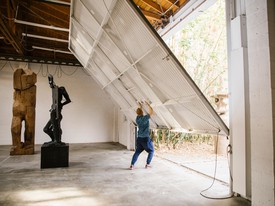
Work in Progress
Thomas Houseago
With preparations for Houseago’s Los Angeles exhibition in progress, Deborah McLeod brings us a glimpse inside the artist’s studio.
